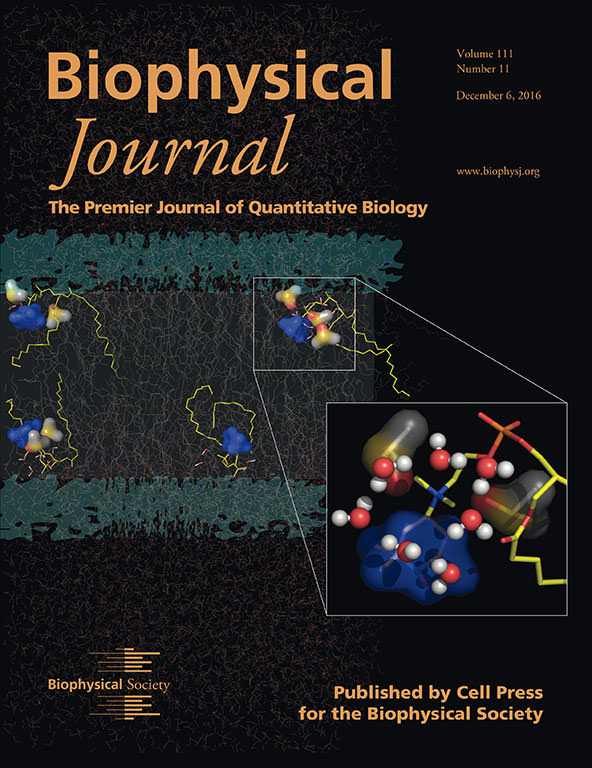 Dimethyl sulfoxide (DMSO) is a powerful anti-freezing agent and has been used in biology as a cryoprotectant of cells. Thanks to a series of experiments and computer simulations bulk properties of DMSO solution are reasonably well understood, yet the effects of DMSO on water molecules near lipid membrane surfaces, which are more relevant for elucidating the underlying physical chemistry of DMSO as a cryoprotectant, still remain elusive.
Dimethyl sulfoxide (DMSO) is a powerful anti-freezing agent and has been used in biology as a cryoprotectant of cells. Thanks to a series of experiments and computer simulations bulk properties of DMSO solution are reasonably well understood, yet the effects of DMSO on water molecules near lipid membrane surfaces, which are more relevant for elucidating the underlying physical chemistry of DMSO as a cryoprotectant, still remain elusive.
The consensus from a number of different experiments is that DMSO dehydrates phospholipid bilayer surfaces, which our study confirms. However, the DMSO-enhanced water diffusivity at solvent-bilayer interfaces, was not confirmed in our simulations. In order to resolve this discrepancy, we explicitly modeled Tempo-PC by appending Tempos to a few choline groups and conducted simulations and analyses.
Our cover image for the December 6th Issue of the Biophysical Journal depicts a snapshot from the molecular dynamics simulation of POPC phospholipid bilayer in 7.5 mol% DMSO solution. The lipid tails are rendered in grey, and the regions corresponding to phosphatidylcholine head groups are depicted in pale blue. Four Tempo-PCs, in the upper and lower leaflets are highlighted with the tail domain in yellow and the Tempo appended to the choline group in blue. Of particular note is that in contrast to the original intent of Overhauser Dynamic Nuclear Polarization (ODNP) measurements using Tempo-PC lipids to probe the surface water dynamics, the Tempo moieties are predominantly equilibrated at 8 − 10 Å below the solvent-bilayer interface, probing the water dynamics in the interior of bilayer. The water and DMSO molecules around the Tempo moieties are depicted in stick and surface representations, respectively. The inset magnifies the snapshot of water and DMSO molecules around Tempo. The image was produced using the molecular visualization system, PyMOL.
DMSO deposited beneath the PC head group, where Tempo moieties are equilibrated, increases the area per lipid slightly, and hence water diffusion probed by Tempo is detected to increase with increasing DMSO. Our study suggests that the experimentally detected signal of water using Tempo, stems from the interior of lipid bilayers, not from the interface. The only viable tool for the direct probe of water dynamics on biological surfaces at present is ODNP measurements using a Tempo spin label. Given its significance, the equilibrated location of Tempo moiety in lipid bilayers revealed here calls for adequate interpretation of data and careful re-evaluation of the technique.
—Yuno Lee, Philip A. Pincus, Changbong Hyeon